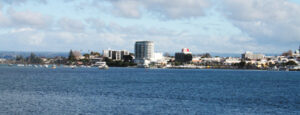The Western Bay of Plenty is located on the eastern coast of New Zealand’s North Island and is within two hour’s drive of 44% of New Zealand’ s population. With a population of over 134,000, Tauranga city is at the region’ s heart.
 Tauranga is currently the sixth largest city in New Zealand, but it is expected to become the fourth largest in the next five years. With more than 100 new residents coming to the region every week, Tauranga is one of the most popular places to live in New Zealand. This growth is expected to continue and the population is projected to double by 2020.
Tauranga is currently the sixth largest city in New Zealand, but it is expected to become the fourth largest in the next five years. With more than 100 new residents coming to the region every week, Tauranga is one of the most popular places to live in New Zealand. This growth is expected to continue and the population is projected to double by 2020.
Western Bay of Plenty covers 208,472 hectares, extending for about 90 kilometres along the coastline from Waihi in the north to Te Puke in the south and about 32 kilometres inland to the rugged, bush-covered Kaimai ranges. Two key features dominate the landscape of Tauranga: the harbour and the 232-metre Maunganui (Mauao) mountain. The city of Tauranga is built on a scenic peninsula around the harbour and estuary, while the Western Bay of Plenty is a predominantly rural area.
The sub-region has a warm, temperate climate. Tauranga receives between 2,200 and 2,400 hours of sunshine a year, making it one of the sunniest places in New Zealand. Summer In the West Bay area, daytime temperatures average highs of 22-24°C (70-75°F) and lows of 16-18°C (60-65°F) in winter.
Average annual rainfall is 1,198 mm, below the national average of around 1,400 mm a year. The landscape is diverse and, combined with a temperate climate, provides an area rich in resources such as native flora and fauna, varied soils, rivers and harbours. As a result, the region boasts strong horticultural and agricultural industries and is known for growing kiwis, avocados, grapes, citrus fruits and other subtropical fruits. More than 80% of New Zealand's kiwi exports are grown in the Bay of Plenty.
